I have two populations A and B distributed spatially with one character Z, I want to be able to make an hexbin substracting the proportion of the character in each hexbin. Here I have the code for two theoretical populations A and B
library(hexbin)
library(ggplot2)
set.seed(2)
xA <- rnorm(1000)
set.seed(3)
yA <- rnorm(1000)
set.seed(4)
zA <- sample(c(1, 0), 20, replace = TRUE, prob = c(0.2, 0.8))
hbinA <- hexbin(xA, yA, xbins = 40, IDs = TRUE)
A <- data.frame(x = xA, y = yA, z = zA)
set.seed(5)
xB <- rnorm(1000)
set.seed(6)
yB <- rnorm(1000)
set.seed(7)
zB <- sample(c(1, 0), 20, replace = TRUE, prob = c(0.4, 0.6))
hbinB <- hexbin(xB, yB, xbins = 40, IDs = TRUE)
B <- data.frame(x = xB, y = yB, z = zB)
ggplot(A, aes(x, y, z = z)) + stat_summary_hex(fun = function(z) sum(z)/length(z), alpha = 0.8) +
scale_fill_gradientn(colours = c("blue","red")) +
guides(alpha = FALSE, size = FALSE)
ggplot(B, aes(x, y, z = z)) + stat_summary_hex(fun = function(z) sum(z)/length(z), alpha = 0.8) +
scale_fill_gradientn (colours = c("blue","red")) +
guides(alpha = FALSE, size = FALSE)
here is the two resulting graphs
My goal is to make a third graph with hexbins with the values of the difference between hexbins at the same coordinates but I don't even know how to start to do it, I have done something similar in the raster Package, but I need it as hexbins
Thanks a lot

